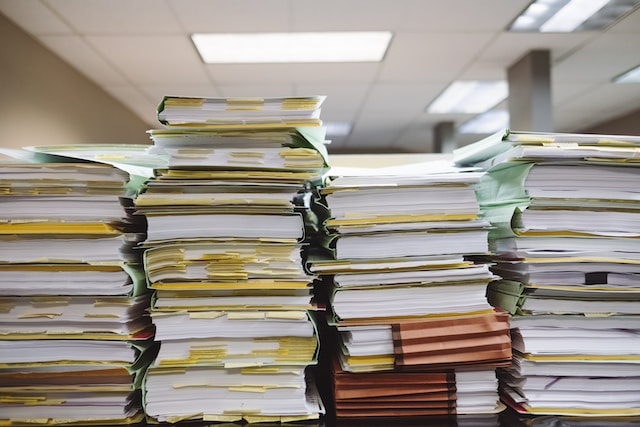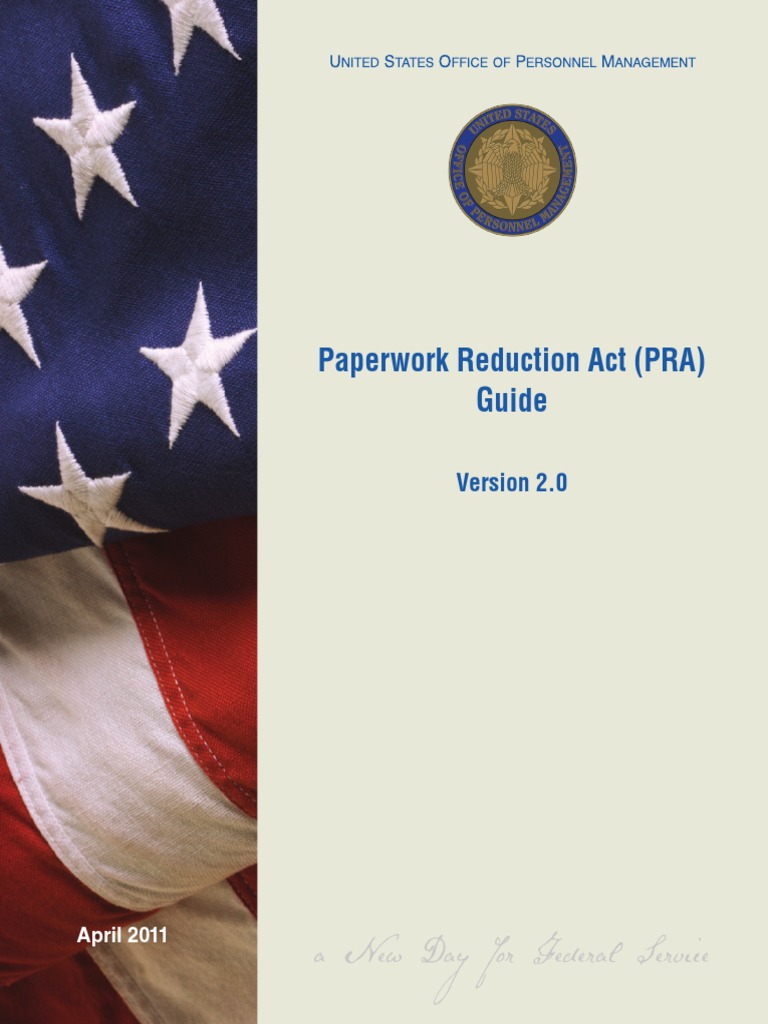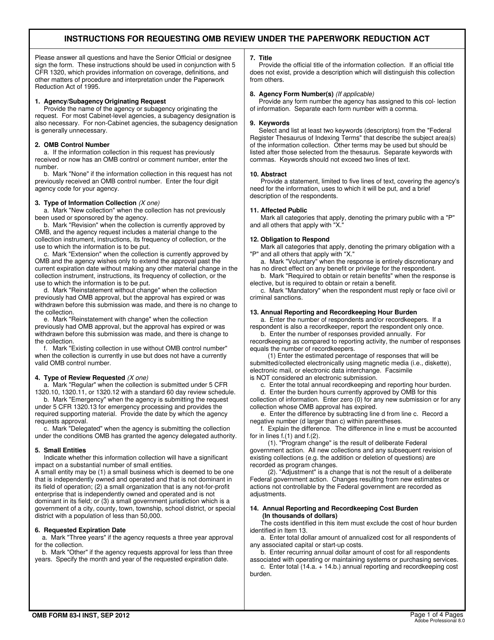Understanding the Paperwork Reduction Act: Simplifying Compliance

Dealing with governmental regulations can often feel like navigating a labyrinth, especially when it comes to compliance with statutes like the Paperwork Reduction Act (PRA). Enacted to reduce the burden of federal information collections on the public, the PRA has significant implications for how organizations collect and manage data. In this detailed exploration, we'll uncover the essentials of the PRA, examine its effects on various sectors, and offer practical steps for compliance, ensuring your organization can navigate this regulatory landscape with ease and efficiency.
What is the Paperwork Reduction Act?

The Paperwork Reduction Act of 1980 was introduced to address the growing burden of federal information collection on the public. It was designed to:
- Limit the amount of time, effort, and financial resources that the public needs to spend responding to federal information collection.
- Ensure that the information collected by federal agencies is necessary for federal purposes and not duplicative.
- Protect public confidentiality and privacy.
🗄️ Note: The PRA applies to federal agencies, but its implications extend to anyone who collects information on behalf of, or for use by, a federal agency.
Key Provisions of the PRA

Understanding the key provisions of the PRA is crucial for compliance:
- Paperwork Reduction Notices: Agencies must publish a notice in the Federal Register when initiating an information collection.
- OMB Approval: Information collections require Office of Management and Budget (OMB) approval, which includes public comment periods.
- Reduction of Burden: Agencies must minimize the burden on respondents and maximize the practical utility of the collected information.
- Confidentiality Assurance: Information collected must be managed to ensure confidentiality and privacy.
Implications for Organizations

Whether you're a private sector entity, a non-profit, or an educational institution, compliance with the PRA has several implications:
- Request Approval: If you are collecting information on behalf of a federal agency, you'll need to ensure the collection has OMB approval.
- Minimizing Burden: Your processes for collecting data should be designed to minimize the effort required from respondents.
- Confidentiality: You must have measures in place to protect the privacy of collected information.
- Public Comment: You might be involved in public comment periods for new or revised information collections.
Steps to Ensure Compliance with the PRA

Here are actionable steps to ensure your organization's compliance with the PRA:
- Identify Information Collections: Determine if your organization is collecting information that falls under the PRA. This includes any data collection on behalf of or for use by a federal agency.
- Review Existing Collections: Check if the information collections you're involved in have current OMB approval.
- Propose New Collections: If proposing a new information collection, follow the OMB approval process, including drafting the necessary paperwork and allowing for public comment.
- Conduct Burden Assessment: Assess the burden on respondents, aiming to minimize time, effort, and cost to them.
- Maintain Compliance Records: Keep records of all approvals, public comments, and adjustments made to collection processes to comply with the PRA.
📌 Note: Non-compliance with the PRA can result in delays, legal repercussions, or the rejection of funding requests for projects involving information collection.
Technology and the PRA

Technology has transformed how information is collected:
- Online Forms: Using electronic means can reduce the burden on respondents by offering more convenient submission methods.
- Data Management Systems: Robust systems can ensure confidentiality and streamline data handling processes.
- E-Government Initiatives: Many federal initiatives aim to modernize data collection through e-government, affecting how organizations interact with the PRA.
How the PRA Affects Your Sector

The impact of the PRA varies across different sectors:
| Sector | Implication |
|---|---|
| Government Contractors | Must ensure all information collections related to contracts are PRA-compliant. |
| Education Institutions | Need to be aware of PRA requirements for federal grant applications or research involving federal funds. |
| Healthcare Providers | Compliance is critical for billing, reporting, and federal program participation. |
| Non-profits | Should consider PRA compliance when involved in federally funded projects or data collection for policy-making. |

Case Studies

Analyzing real-world scenarios where the PRA played a significant role can provide valuable insights:
- Federal Grants: A university had to adjust its research project application due to PRA requirements, ensuring OMB approval was obtained before initiating data collection from students.
- Environmental Data: A non-profit organization collecting data for an environmental study had to navigate the PRA's processes, which impacted the timeline of their project.
- Compliance Issues: An agency faced setbacks when it initiated a large-scale survey without proper PRA approval, leading to project delays and funding issues.
📊 Note: Case studies demonstrate that while compliance might seem cumbersome, it can prevent more significant issues down the line.
In wrapping up, understanding and complying with the Paperwork Reduction Act is not just about legal adherence but also about enhancing the efficiency and effectiveness of information collection efforts. By minimizing the burden on respondents, ensuring confidentiality, and streamlining processes, organizations can not only fulfill regulatory requirements but also foster a more transparent and data-driven environment. Whether you're dealing with federal grants, research projects, or policy-making, the PRA serves as a framework that promotes accountability and public trust.
Does the PRA apply to all types of data collections?

+
No, the PRA primarily focuses on collections of information by or for federal agencies. Collections for state, local governments, or private entities not associated with federal agencies are generally outside its scope.
How long does the OMB approval process typically take?

+
The approval process can take from several months to over a year, depending on the complexity of the collection, public comments, and agency responses.
What happens if an organization collects information without proper PRA approval?

+
It can result in significant delays, funding issues, legal repercussions, and the potential for the information to be deemed unusable by the federal agency involved.



